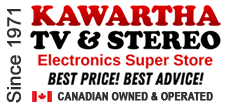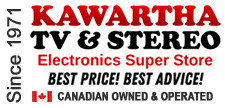For decades if you wanted to listen to music in your home, it involved placing a plate sized vinyl disk on a turntable and "dropping the needle".
Then somewhere in the late 1980's technology started to change (as it always does) and compact disc (CD) players quickly started to replace the turntables that had ruled the home music scene for most of the previous decade.
The home turntable was dead, gone and buried. A relic that had been relegated to the dust bin of history like so many other outdated technologies before it.
But a couple decades later something surprising happened.
Turntables made a comeback.
Now as you read this you may be thinking to yourself "how"?
Back in the day to operate a turntable you had to have a receiver and wired speakers (two other technologies that held on longer than the turntable, but thanks to other technologies that eventually came along, also faded away), so did everyone go and dig their old gear up and reconfigure their 1988 hifi set up?
Nope. Not at all.
What many people are not aware of is that that you can now run a turntable through bluetooth speakers. Yes, you read that right, now you can stream your turntable through your wireless bluetooth speaker just like with your phone.
When shopping for turntables there are no shortage of details to consider. Today we’ll touch on two things you need to consider.
The first is, should you choose a belt drive turntable or a direct drive turntable?
A belt drive is where the motor is off to the side (not directly beneath the record) and has a belt that then spins the turntable platter.
A direct drive is where the motor is actually directly below the platter.
So which is better? There isn’t a simple answer to this. Both have the pros and cons.
Belt drives take a moment to get up to speed and eventually the belt itself will need to be replaced (which is inexpensive and easy to do), whereas direct drives normally get up to speed immediately and has no belt that will need to be replaced.
Direct drive turntables are also preferred by DJ’s due to their ability to be spun in either direction and offer more speed control.
So after all of that it would seem on the surface that direct drive are the better option, however fans of belt drive turntables insist (often vehemently) that since the motor itself is not directly below the platter the sound is better, and that more than offsets any other consideration.
The second thing anyone buying a turntable will want to consider is how many speeds do you want your turntable to have? Most turntables are two speeds, and play standard L P records and forty fives. A third speed lets you play seventy eight R P M records, which are a bit more rare.
So today, you can walk into Kawartha TV and Stereo, purchase a bluetooth enabled turntable, and as long as you have bluetooth speakers (and who doesn’t), go down to your basement, dig out your old record collection and you will very soon be listening like it was 1988 again!

